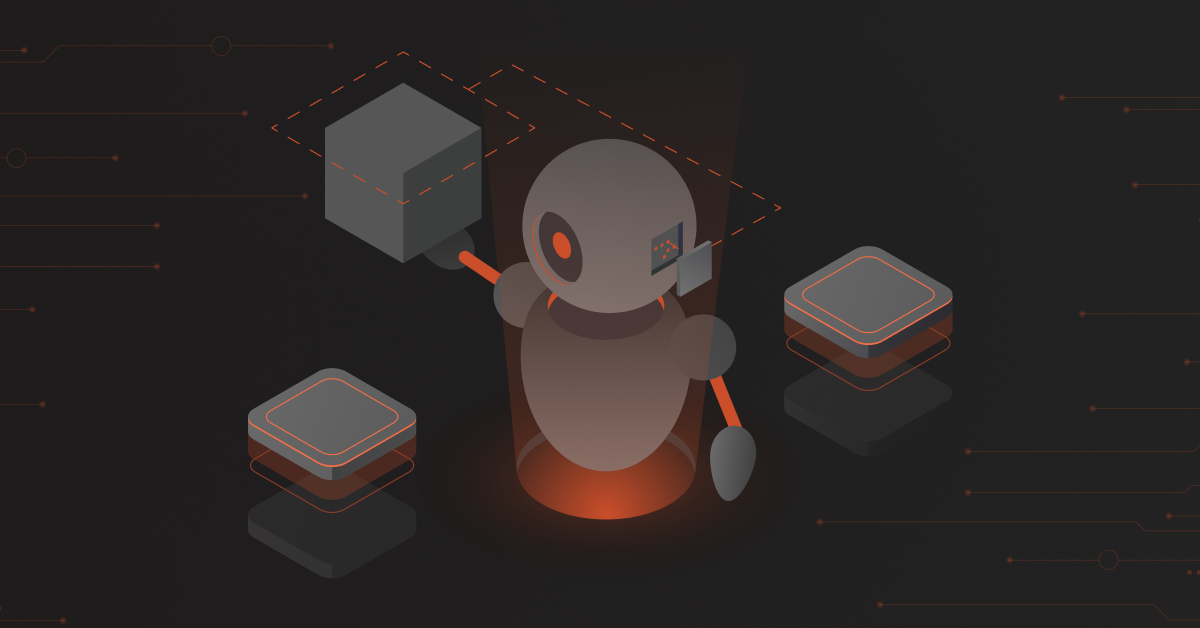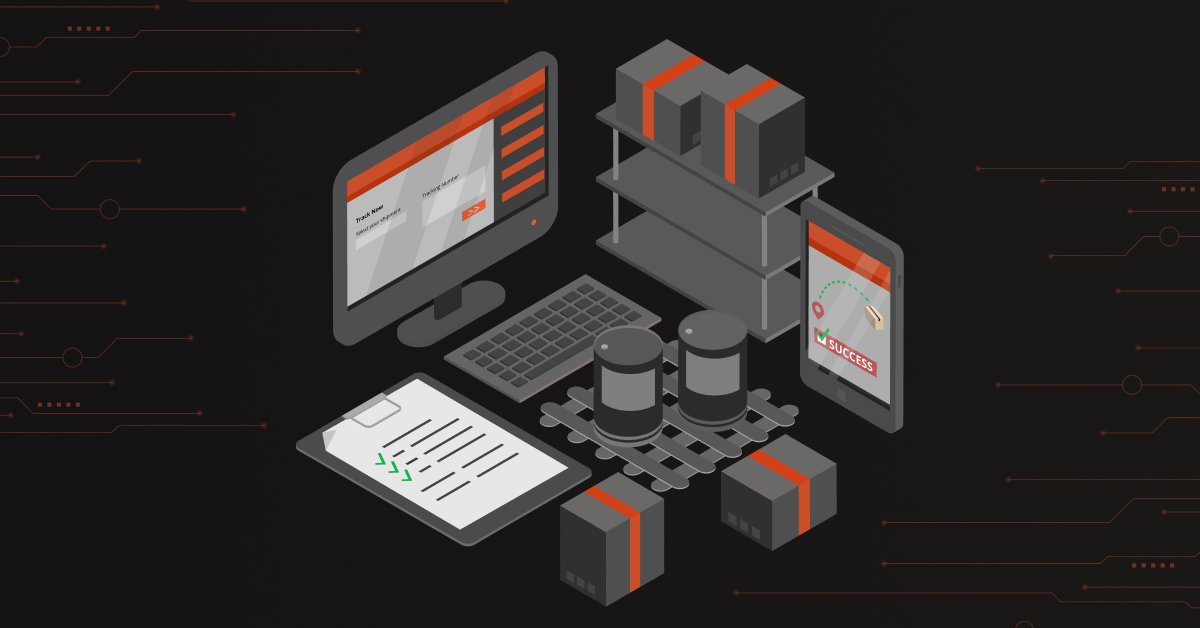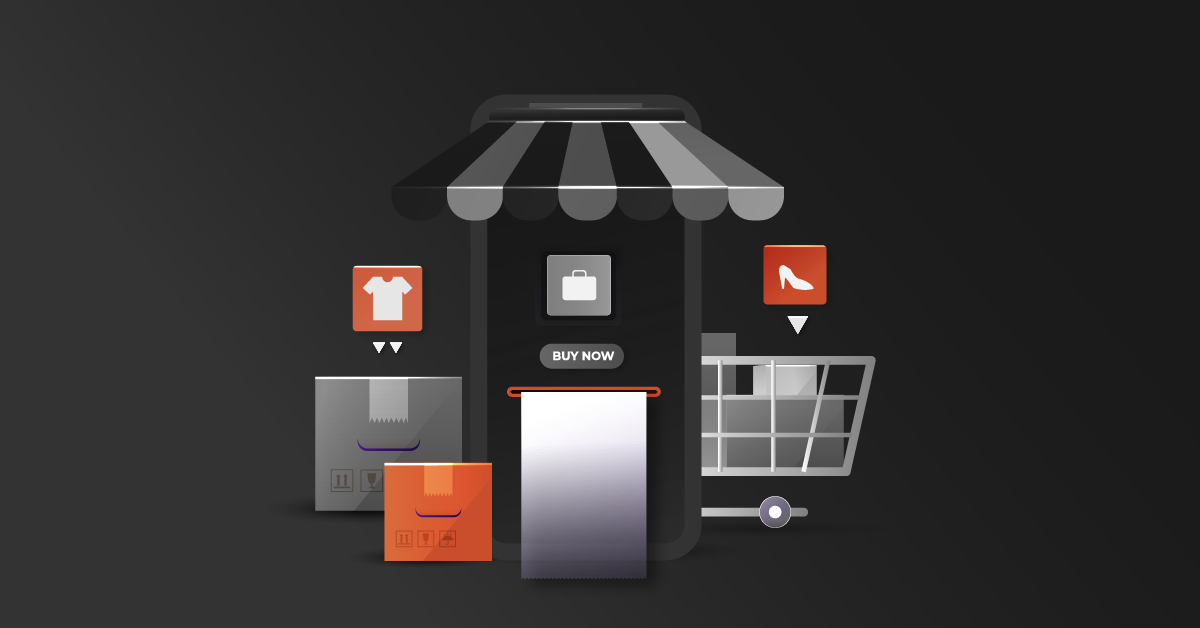Efficient integration solutions are crucial for businesses to thrive. They facilitate seamless communication, data exchange, and collaboration among various systems, applications, and stakeholders within an organization.
Two prominent players in the integration arena, Talend and MuleSoft, offer means to connect data and applications, both in cloud and on-premises environments. Talend excels in data integration, offering a robust open-source solution with a wide array of connectors, making it an excellent choice for ETL (Extract, Transform, Load) processes and Big Data integration. On the other hand, MuleSoft specializes in API integration, providing an all-inclusive platform for designing, deploying, and managing APIs.
Your choice between the two largely depends on your specific integration requirements, budget, and long-term business strategy. Let’s break them down in detail.
Contents
Talend Vs MuleSoft: Key Differences
| Talend | MuleSoft | |
| Definition | It is an ETL kind of tool. | It is a complete ETL tool with additional features. |
| Focus | Data integration and management platform. | API Management and Integration platform. |
| Main purpose | It is used for data integrations | It is used for data operations |
| Skill level | Low-code environment. | No-code, low-code solutions.Scripting for data transformation |
Sources | 1,000 connectors and components. | 400+ |
| Run time | It has the normal runtime capability. | It has a high runtime capability. |
| Set up process | It is easy to set up. | Although it is easy to set up, it needs to be set up along with its plugins. |
| Pricing | Subscription-based pricing. 14-day free trial for cloud. Free Talend Open Studio. | Volume-based and feature-based pricing. With a 30-day free trial. |
Talend: Overview
Talend, is a cloud-based platform that was established in 2005. It is known for its open-source tool, Talend Open Studio software, which is available for free. Additionally, Talend offers an all-inclusive suite called Talend Data Fabric, combining data integration, quality, and governance into one powerful platform.
It boasts an array of pre-built integration templates and a wide variety of components. Talend’s interface is designed for ease of use with a drag-and-drop approach, making it accessible to users and enhancing the operational efficiency across the spectrum.
Features
- Efficient Data Movement: Talend can swiftly move millions of reports in a single job run, ensuring speedy data transfer.
- Technical Versatility: This tool offers a rich set of technical features, making it suitable for developers who are comfortable working with intricate Java code.
- Configurability: Users have the flexibility to fine-tune various settings within the tool, allowing for a tailored customer experience to match their unique requirements.
- Real-time data integration: Talend provides real-time statistics for business management, enabling users to make informed decisions. It achieves this by using native code in the development process.
- Enhanced Collaboration: Talend promotes collaboration across different platforms, facilitating the creation of more efficient designs and offering straightforward data cleansing capabilities.
Use Cases
Synchronizing User Identities:
Set up SCIM provisioning to easily manage and synchronize user identities between your identity provider (e.g., Azure AD) and Talend Cloud.
Managing Task Runs with API:
Use a specific API endpoint to easily pause or resume data integration task runs, aligning them with your system’s management needs, such as during system maintenance.
Asset Retrieval with Crawler:
A crawler allows you to effortlessly retrieve a complete list of assets stored in a connection, all in one go.
Working with Datasets:
A dataset is simply a collection of data.
Automating Identities Management:
Streamline processes for creating users, assigning users to groups, allocating roles, and retrieving user profiles through automation.
IP Allowlist for Access Control:
Implement an IP allowlist policy to control and restrict user access based on specific IP addresses.
Monitoring Task Performance:
Monitor and analyze your tasks with detailed logs and component metrics generated during each task run, providing insights when needed.
Utilizing Service Accounts:
Service accounts represent non-human user entities using access tokens to authenticate with Talend Cloud and access Talend services.
Scheduling Tasks with API:
Use dedicated API endpoints to efficiently schedule task or plan execution, allowing for multiple triggers to control when and how tasks run.
Pros
- AWS RedShift ETL Integration: Talend offers integration with AWS RedShift for building processes that move components into visual workspaces, simplifying the setup of relationships and connections.
- Master Data Management (MDM): Talend incorporates MDM functionality, allowing organizations to have a unified, accurate view of critical enterprise data, and enhancing transparency.
- Vibrant Community Support: Being open-source, Talend benefits from an active user community. Users and community members engage to seek solutions, share knowledge, and celebrate achievements.
- Rapid Development & Deployment: Talend enables quick development and deployment, automating tasks for future use, and enhancing overall efficiency.
- Data Transformation Capabilities: Talend provides tools for transforming data from one format to another, facilitating various data manipulation tasks.
Cons
- Customer Support Delays: Users may experience delays in customer support responses, including instances where initial replies are followed by unresponsiveness to calls and emails.
- Limited Machine Learning Components: Talend lacks sufficient components for conducting duplication and fuzzy matching using machine learning, limiting advanced data processing.
- Unclear Error Handling: Some error messages in Talend may lack clarity, leaving users puzzled about the causes and solutions for unexpected problems.
- Inadequate Unit Testing Support: Talend may not provide satisfactory tools or methods for conducting unit testing of components, potentially impacting quality assurance processes.
- Occasional Performance Lag: The platform may exhibit occasional sluggishness, particularly when handling complex tasks, as it is based on the Eclipse IDE.
Pricing
Talend offers a range of pricing options:
- Open Source: Talend is available as an open-source middleware solution, which means it can be used for free by the community.
- Subscription Plans: For commercial users, Talend offers subscription plans. The standard subscription is priced at $1,170 per user monthly or $12,000 annually.
- Custom Plans: Tailored plans such as Stitch, Data Management Platform, Big Data Platform, and Data Fabric are available, but specific pricing details are provided upon contacting the sales team. You can also request a demo to explore Talend’s offerings before making a commitment.
Related reads: Talend vs Pentaho vs Informatica [+an iPaaS Alternative for Distributors]
MuleSoft: Overview
MuleSoft company was founded in 2006 and acquired by Salesforce in 2018. It offers MuleSoft Anypoint Platform, connecting data and applications across diverse environments. It provides a suite of services and components, including Composer and Anypoint Studio.
MuleSoft is renowned for its extensive connector library and templates utilized by a global community of over 1600 organizations. While Composer offers a no-code data integration workflow, complex data pipelines are designed using Anypoint Studio, a desktop application that requires installation.
Features
- Creating and Hosting Services: MuleSoft offers the ability to create and host services. Think of it as a lightweight container for hosting reusable services.
- Service Mediation: It safeguards services from different message formats and protocols while separating business logic from the technical details. You can call services without worrying about where they’re located.
- Message Routing: MuleSoft can intelligently route, filter, combine, and rearrange messages based on their content and specific rules.
- Data Transformation: MuleSoft excels at connecting data in various formats and transport protocols, making data exchange a breeze.
Use Cases
Aggregation of Data:
MuleSoft Salesforce integration helps aggregate this data into a unified system. This simplifies data analysis, enabling Personalized customer journeys, Competitive insights from first-party data sources, Comprehensive customer profiles, Advanced analytics using sensor and ERP data, Data migration to cloud-based warehouses.
Streaming Data Ingestion:
Salesforce MuleSoft integration facilitates the ingestion of streaming data, making it valuable for Tracking sensors in vehicles, Monitoring stock prices and risk calculations in finance, Combining user click data in retail.
Data Sync Between Multiple Applications:
Integration tools bridge information gaps and enable real-time insights. This can be categorized into:
Synchronized Data Transfers: Requested data is transferred with sender acknowledgment, e.g., CRM-generated sales reports.
Asynchronous Data Transfers: Data is sent without acknowledgment, useful for sending promotional texts or processing insurance claim receipts.
Sharing Data with External Partners:
Salesforce MuleSoft integration ensures data security, eliminating silos. This is useful for, sharing purchase order data with suppliers, sending invoices for payment purposes, and sharing tax information with government agencies.
Bulk Data Movement:
Salesforce MuleSoft integration assists in migrating invoices from ERP to payment systems, reconciliation and analysis of financial transactions, summarizing shipping and tracking data.
Orchestration and Data Processing:
MuleSoft Salesforce integration facilitates data processing while ensuring compliance with data privacy laws.
User Interface Integration and Mashups:
Integrating content for human consumption enhances user interfaces. This integration service serves as an aggregator for multiple functionalities, benefiting various apps, websites, and intranets.
Broadcasting Events:
Events like new hires, expense approvals, and website traffic are identified, captured, and notified downstream. This data is valuable for tracking shipments, sending notifications, managing promotional events, monitoring inventory updates, and tracking website traffic.
Pros
- Extensibility: Being open-source, MuleSoft allows you to add new converters via its extensibility framework, enhancing the capabilities of each Mule Soft 3 application.
- ETL and Master Data Management: It provides solutions for ETL methods and Master Data Management (MDM), including customer data integration (CDI).
- API-Led Connectivity: MuleSoft offers a decentralized structure with API-led connectivity, simplifying communication between applications and databases.
- API Management: You can easily build, design, and manage APIs using the Anypoint Platform, enabling user management and traffic analysis.
Cons
- Processing Improvement Needed: MuleSoft’s data integration tools could benefit from enhancements on the processing side to optimize performance.
- Cost: Compared to some other data integration platforms, MuleSoft can be relatively expensive, which may not align with all budgets.
- Adapters for Digital Space: It lacks up-to-date adapters for operating in the digital space, potentially limiting compatibility with modern technologies.
- Occasional Functionality Issues: Some users have reported occasional disruptions in functionality, especially when dealing with processing layers.
- Automation Manager Challenges: The automation manager doesn’t offer automatic customization of alerts, which can lead to delays when dealing with API management tasks.
Pricing
MuleSoft operates on a subscription-based pricing model. The total cost you’ll incur depends on several factors, including the specific edition you choose, the number of computing cores you need, and your preferred deployment options. It’s important to note that there might be extra charges associated with support and training services if you opt for them.
Related reads: Snaplogic vs MuleSoft vs Boomi [+ Recommended iPaaS Alternative]
The Best Alternative For Distributors – DCKAP Integrator
DCKAP Integrator is a cutting-edge cloud-based data integration platform. This robust and adaptable system empowers development teams to effortlessly manage integrations, reducing manual errors and minimizing downtime.
The best part of cloud-based technology is that it eliminates the need for different deployment environments, simplifying the entire process.
With DCKAP Integrator, you can seamlessly connect a large number of business applications, whether it’s ERP, eCommerce, CRM, EDI, databases, or more. This platform has been thoughtfully crafted to cater to the ever-evolving needs of distributors, ensuring efficient data flow alignment between applications as business requirements change.
DCKAP Integrator Features
- Built-in Connectors: DCKAP Integrator offers purpose-built connectors, finely tuned to the specific demands of B2B distributors, streamlining the integration process.
- Plug-and-Play Capabilities: Setting up your integration becomes a breeze, simplifying the entire onboarding process.
- Multitenancy: Tailor the solution to your unique requirements, ensuring it aligns perfectly with your business model.
- Alert Mechanisms: Instantly identify and address failures with a robust alert system, ensuring smooth and continuous operations.
- Detailed Logging Mechanism: Keep a close watch on your operations with a comprehensive logging mechanism, promoting transparency and accountability.
Pros
- User-Friendliness: DCKAP Integrator stands out for its user-friendly interface, ensuring an intuitive experience for all users.
- Scalability and Adaptability: As your business evolves, this integration platform keeps pace, adapting to your changing needs seamlessly.
- Regular Feature Upgrades: Stay ahead of the curve with consistent updates that align with industry best practices.
- Responsive Customer Support: Count on the reliable support team that’s readily available to assist you whenever needed.
- Flexible Pricing Models: Mid-sized distributors can now compete on a level playing field with larger players thanks to flexible pricing options.
Cons
- Complex Error Log Comprehension: Initially, grasping error logs and workflows may be challenging. However, the flow module is being redesigned to enhance readability and simplify integration.
Pricing
DCKAP Integrator offers a transparent and flexible pricing model tailored to meet the diverse needs of businesses. Here’s a breakdown of their pricing tiers:
- Standard: Priced at $599 per month when billed annually
- Professional: Priced at $999 per month when billed annually
- Enterprise (Custom): The Enterprise tier offers a custom pricing model
Sign up for a demo to see how DCKAP Integrator can transform your integration processes and boost your business efficiency.
FAQs
What is the primary difference between Talend and MuleSoft?
Talend and MuleSoft serve different purposes. Talend is primarily a data integration solution and ETL tool, while MuleSoft is focused on API integration and application connectivity.
What is MuleSoft ESB, and how does it differ from Talend’s offerings?
Mule ESB (Enterprise Service Bus) is a core component of MuleSoft’s platform for building application networks. It’s designed for real-time API integration. Talend, on the other hand, is more focused on data integration and ETL (Extract, Transform, Load) tasks.
Can I use MuleSoft ESB for both application integration and data integration, like Talend?
While MuleSoft ESB is primarily designed for application integration, it can also handle data integration tasks. However, Talend is often considered more suitable for data integration.
What level of customer service can I expect with Talend and MuleSoft?
Talend and MuleSoft both have customer support teams, but the quality and availability can vary depending on the subscription or edition you choose.
Which platform, Talend or MuleSoft, is better for big data integration?
Talend is often preferred for big data integration due to its open-source nature and strong community support. MuleSoft can handle big data integration as well but may require additional components.
Can you explain what is meant by an integrated software platform in the context of Talend and MuleSoft?
An integrated software platform, in this context, refers to the capabilities of both Talend and MuleSoft to provide a comprehensive solution for various integration needs. This includes data integration, application integration, and more within a single platform.
Can both Talend and MuleSoft integrate with cloud storage solutions like AWS S3 or Azure Blob Storage?
Yes, both Talend and MuleSoft provide connectors and features for integrating with popular cloud storage services like AWS S3, Azure Blob Storage, and others.
What are the different types of integration systems available in the market?
Different systems can be categorized into various types, such as ESB (Enterprise Service Bus), iPaaS (Integration Platform as a Service), API Gateways, ETL tools, and custom-built solutions.
How do Talend and MuleSoft handle data integration and transformation differently?
Talend relies on its graphical user interface, making it relatively easy for users with SQL server and Java knowledge. MuleSoft uses DataWeave for data transformations and is well-suited for those who prefer a more code-centric approach.
Where can I find the best reviews for Talend and MuleSoft to make an informed choice?
To find comprehensive reviews, you can visit trusted software review websites like G2 Crowd, Capterra, and Trust Radius. Additionally, consulting industry-specific forums and user communities can provide valuable insights into user experiences.
What are the different ways to create good experiences for customers from various data sources?
Key elements include data quality, personalization, responsiveness, and seamless integration of data from various sources.




